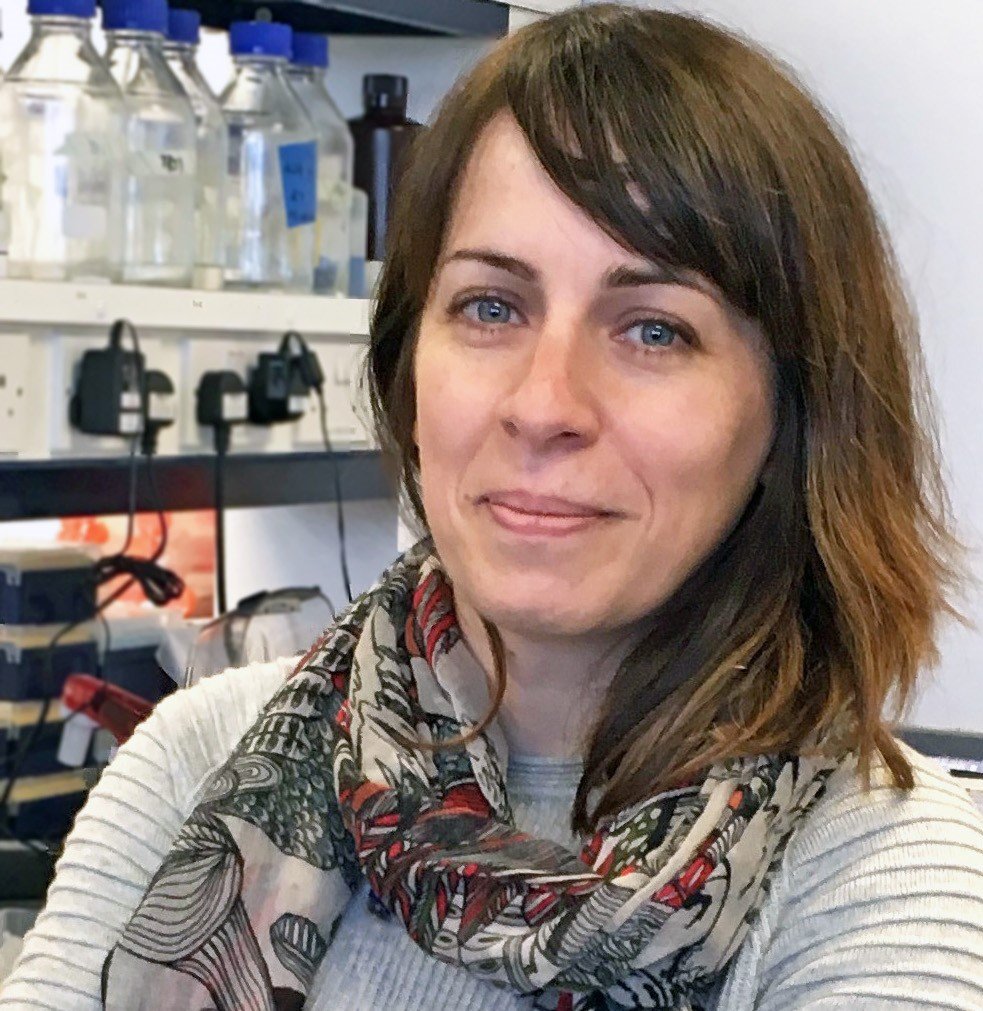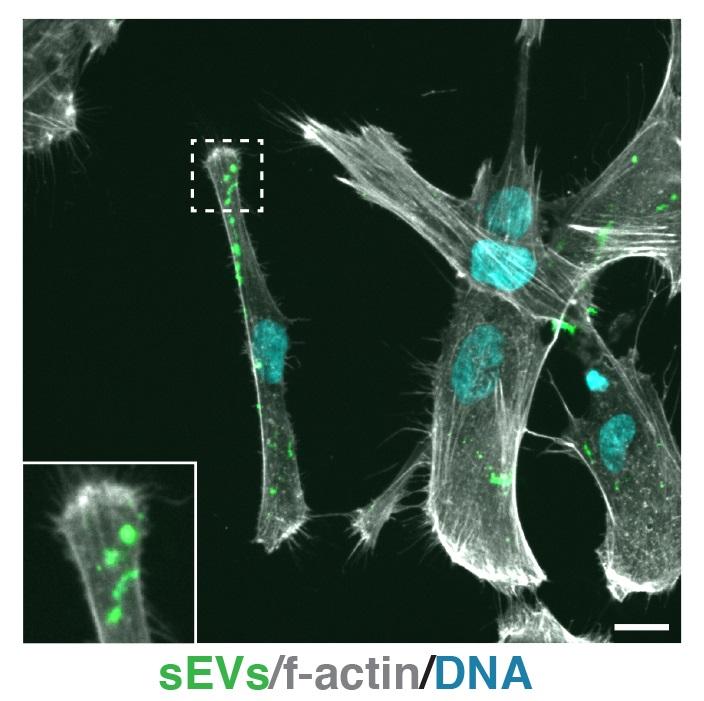Cancer cell communications - Q&A with Dr Susana Godinho

We spoke with Dr Susana Godinho, Group Leader in Barts Cancer Institute (BCI)’s Centre for Cancer Cell and Molecular Biology, to find out about her recent paper published in Current Biology. Dr Godinho and her team set out to identify why cancer cells carrying extra centrosomes (a cellular structure involved in the process of cell division and microtubule nucleation) exhibit increased release of communications packages known as small extracellular vesicles, which contain proteins or other molecules used by cells to communicate with other cells in their environment.
What is the new study about?
We previously demonstrated that the presence of extra centrosomes (often observed in human tumour cells) changes what cells secrete, including proteins associated with extracellular vesicles. Extracellular vesicles are very important for cell-to-cell communication and play important roles in cancer. In this study, we set out to understand why cancer cells carrying centrosome abnormalities display increased secretion of small extracellular vesicles (sEVs).
We focused on pancreatic cancer, in particular pancreatic ductal adenocarcinoma (PDAC; the most common type of pancreatic cancer), and we found that when PDAC cells have extra centrosomes they secrete more sEVs. These sEVs are also functionally distinct and have the ability to activate pancreatic stellate cells. Stellate cells help to create an impenetrable barrier around PDAC tumours, in a process known as fibrosis.
Was there anything surprising about the results?

The fact that induction of supernumerary centrosomes is sufficient to drive the secretion of sEVs was very surprising and exciting! We delved deeper into the mechanism and found that increased sEV secretion is a consequence of the oxidative stress that cells with extra centrosomes experience.
Briefly, oxidative stress caused by higher levels of reactive oxygen species leads to defects in a different cellular structure: the lysosome. Lysosomes are very important for cell homeostasis and they play a role in the degradation of compartments within cells, including structures called multivesicular bodies where these sEVs originate. Thus, we propose that impaired multivesicular body degradation in cells with amplified centrosomes leads to increased sEV secretion.
Why is the study important? What are the wider implications?
One of the cool things about this study is that it really reinforces the idea that cancer cells with amplified centrosomes have broader roles in tumours via changing secretion and cell-to-cell communication. This means that even if tumours only have small numbers of cells with extra centrosomes, it is still possible that targeting these cells could be therapeutically beneficial for patients.
What are the next steps for this research?
We are currently investigating what factors contained in these sEVs are responsible for stellate cell activation and whether these play a role in PDAC fibrosis. The extensive fibrosis observed in PDAC makes these tumours difficult to treat and highly aggressive. Thus, we believe that if we understand the factors that contribute to stellate cell activation and PDAC fibrosis we could develop novel ways to target these tumours.
The research was performed in collaboration with Dr Faraz Mardakheh's, Professor Hemant Kocher's and Professor Richard Grose's laboratories BCI and Dr Graca Raposo’s laboratory at Institute Curie (Paris, France). This study was primarily supported by the Medical Research Council and Cancer Research UK.
More information
- Research paper - Adams et al. Centrosome amplification mediates small extracellular vesicle secretion via lysosome disruption, Current Biology (2021) ISSN 0960-9822, https://doi.org/10.1016/j.cub.2021.01.028.
- Related article - ‘The neighbouring effect’: Centrosomal abnormalities drive invasion of surrounding cells
Category: Interviews, Publications

Ian Hart 14/03/2021
Oh, well done all!